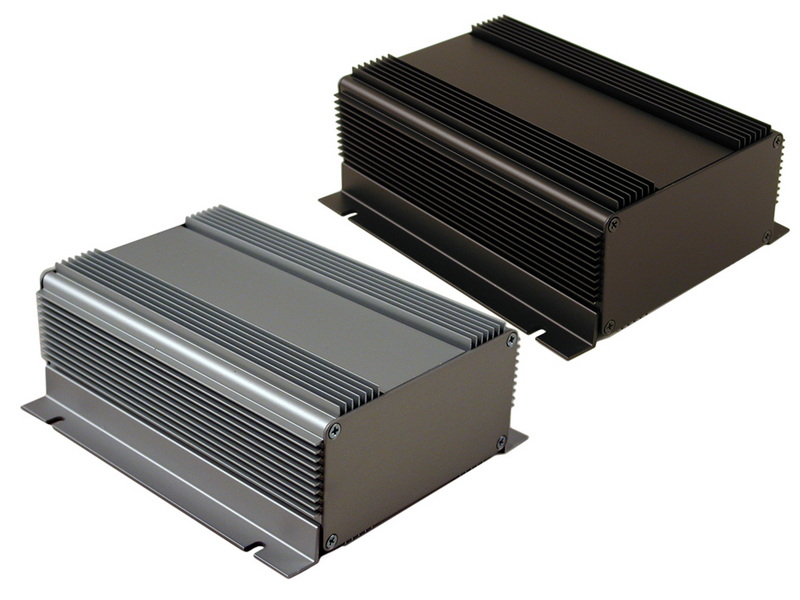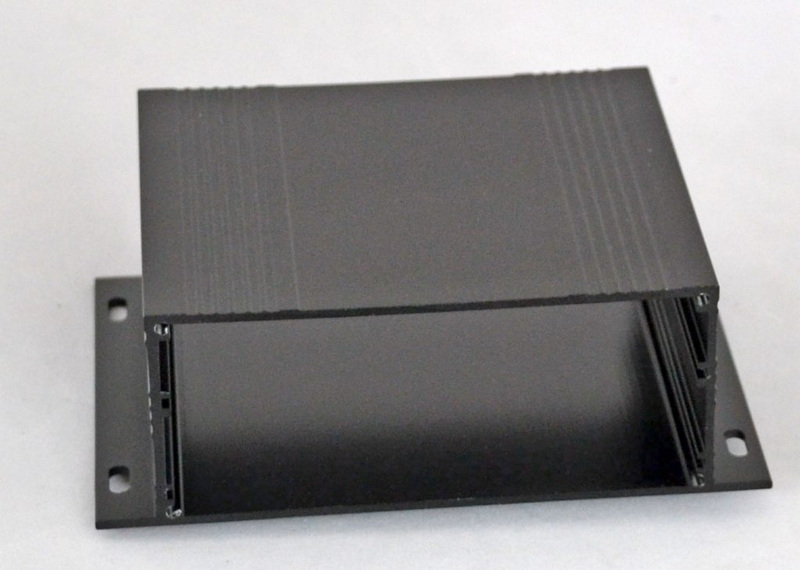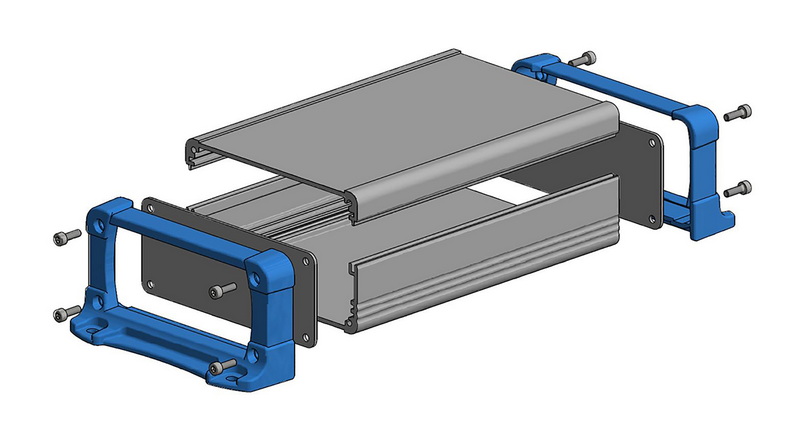Content Menu
● Introduction
● Benefits of Aluminum Extrusion Enclosures
>> Durability and Strength
>> Lightweight Design
>> Customization Options
>> Heat Dissipation Properties
>> Cost-Effectiveness
>> Applications of Aluminum Extrusion Enclosures
● Conclusion
● Related Questions
>> 1. What are the main advantages of aluminum extrusion enclosures over plastic ones?
>> 2. How does the heat dissipation of aluminum enclosures benefit electronic devices?
>> 3. Can aluminum extrusion enclosures be customized for specific applications?
>> 4. Are aluminum extrusion enclosures cost-effective in the long run?
>> 5. In which industries are aluminum extrusion enclosures commonly used?
Introduction
Aluminum extrusion enclosures have become a staple in the electronics industry, providing a robust and versatile solution for housing electronic components. These enclosures are crafted through a process that involves forcing aluminum through a die to create a specific cross-sectional profile. This method not only allows for intricate designs but also ensures that the enclosures are lightweight yet durable. As technology continues to advance, the demand for effective housing solutions that can withstand various environmental conditions has increased. This article explores the numerous benefits of using aluminum extrusion enclosures for electronics, highlighting their durability, lightweight design, customization options, heat dissipation properties, cost-effectiveness, and diverse applications.

Benefits of Aluminum Extrusion Enclosures
Durability and Strength
One of the primary advantages of aluminum extrusion enclosures is their exceptional durability. Aluminum is naturally resistant to corrosion, which makes it an ideal material for electronic housings that may be exposed to harsh environments. Unlike plastic enclosures, which can become brittle over time, aluminum maintains its structural integrity even under extreme conditions. This durability ensures that the electronic components housed within are protected from physical damage, moisture, and dust.
Moreover, aluminum extrusion enclosures can withstand significant mechanical stress, making them suitable for industrial applications where equipment may be subjected to vibrations or impacts. The strength of aluminum allows for thinner walls compared to other materials, reducing weight without compromising protection.
Lightweight Design
The lightweight nature of aluminum is another significant benefit. In industries where weight is a critical factor, such as aerospace and automotive, using aluminum extrusion enclosures can lead to substantial weight savings. This reduction in weight can enhance the overall performance of electronic devices, making them easier to transport and install.
Additionally, the lightweight design of aluminum enclosures contributes to energy efficiency. For instance, in applications where cooling systems are required, lighter enclosures can reduce the energy needed for transportation and installation, leading to lower operational costs.
Customization Options
Aluminum extrusion enclosures offer extensive customization options, allowing manufacturers to create enclosures tailored to specific needs. The extrusion process enables the production of various shapes and sizes, accommodating different electronic components and configurations. This flexibility is particularly beneficial for companies that require unique designs for their products.
Custom aluminum enclosures can also include features such as cutouts for connectors, mounting brackets, and ventilation holes. These modifications ensure that the enclosure not only fits the electronic components perfectly but also facilitates ease of use and accessibility. Industries such as telecommunications, medical devices, and consumer electronics often rely on custom aluminum enclosures to meet their specific requirements.
Heat Dissipation Properties
Effective heat management is crucial in electronic devices, as excessive heat can lead to component failure and reduced performance. Aluminum extrusion enclosures excel in this area due to their excellent thermal conductivity. Aluminum dissipates heat more efficiently than many other materials, helping to maintain optimal operating temperatures for electronic components.
The design of aluminum enclosures can also be optimized for heat dissipation. For example, incorporating fins or ribbed surfaces increases the surface area, allowing for better airflow and heat transfer. This feature is particularly important in high-performance applications where heat generation is significant.

Cost-Effectiveness
While the initial cost of aluminum extrusion enclosures may be higher than that of plastic alternatives, their long-term cost-effectiveness is undeniable. The durability and longevity of aluminum enclosures mean that they require less frequent replacement, reducing overall lifecycle costs. Additionally, the reduced need for maintenance and repairs contributes to cost savings over time.
Furthermore, the lightweight nature of aluminum can lead to lower shipping costs, especially for large quantities of enclosures. Companies can benefit from these savings, making aluminum extrusion enclosures a financially sound investment.
Applications of Aluminum Extrusion Enclosures
Aluminum extrusion enclosures are utilized across various industries, showcasing their versatility and effectiveness. In the telecommunications sector, these enclosures protect sensitive equipment from environmental factors while allowing for efficient heat dissipation. In the automotive industry, aluminum enclosures house electronic control units, ensuring they remain operational under challenging conditions.
The medical device industry also benefits from aluminum extrusion enclosures, as they provide a sterile and durable housing for critical equipment. Consumer electronics, such as computers and audio equipment, frequently use aluminum enclosures for their aesthetic appeal and functional advantages.
Conclusion
In conclusion, aluminum extrusion enclosures offer a multitude of benefits that make them an ideal choice for housing electronic components. Their durability, lightweight design, customization options, heat dissipation properties, and cost-effectiveness position them as a superior solution in various industries. As technology continues to evolve, the demand for reliable and efficient housing solutions will only increase, further solidifying the role of aluminum extrusion enclosures in the electronics market.

Related Questions
1. What are the main advantages of aluminum extrusion enclosures over plastic ones?
Aluminum extrusion enclosures are more durable, resistant to corrosion, and provide better heat dissipation compared to plastic enclosures. They also offer customization options and are lighter, making them ideal for various applications.
2. How does the heat dissipation of aluminum enclosures benefit electronic devices?
Aluminum's excellent thermal conductivity allows for efficient heat dissipation, helping to maintain optimal operating temperatures for electronic components and preventing overheating.
3. Can aluminum extrusion enclosures be customized for specific applications?
Yes, aluminum extrusion enclosures can be tailored to meet specific requirements, including size, shape, and features such as cutouts and ventilation holes.
4. Are aluminum extrusion enclosures cost-effective in the long run?
While the initial cost may be higher, aluminum enclosures are cost-effective in the long run due to their durability, reduced maintenance needs, and lower shipping costs.
5. In which industries are aluminum extrusion enclosures commonly used?
Aluminum extrusion enclosures are widely used in telecommunications, automotive, medical devices, and consumer electronics, among other industries, due to their versatility and effectiveness.






















